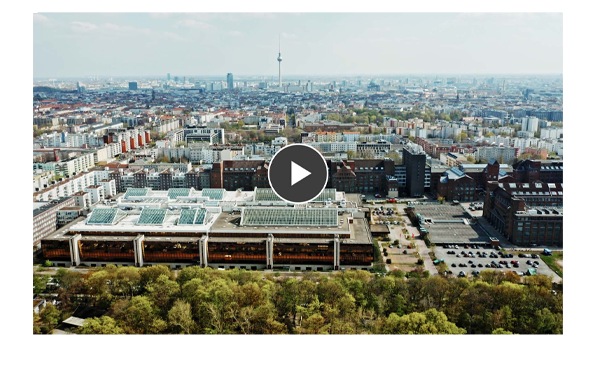General
Will the space be freely available to everyone?
In our view, neighborhood developments in Berlin will only function in the future as integral components of the existing urban space. Here we mean public circulation and accessibility for the public created with the implementation of the planning, especially of uses in the first floor zones. We also want to ensure that spaces can be created for as many and diverse users and tenants as possible.
We believe that in the future developments in Berlin can only function as integral components of the urban space, by which we mean public access and walkways, especially at street level. We also want spaces to be created for the most diverse number of visitors and tenants.
What will be built on the site?
Together with all participants, we want to develop an urban, forward-looking quarter directly at Volkspark Humboldthain. The use and development of the site have not been specifically defined. But , as one of the eleven “Zukunftsorte” in Berlin, a close cooperation between science and commerce plays a central role at this site, and the quarter should help safeguard the future of Berlin as a driver of innovation of new technologies and industries and as an inspiration for new economic models that are appropriate for the digital age.
Schedule / Process
How log will the planning and building take to complete?
The QAH is expected to be defined over a planning period of four to five years. This was preceded by the workshop process (2021), in which uses and qualities were discussed jointly and in detail. This was followed by the urban planning competition (2022) and the development of a master plan. The competition was carried out in two stages, with the first stage of the competition being used to develop basic solutions and the second stage to develop detailed elaborations and proposals. Once the development plan has been approved (2025) and further planning work has been completed, the first preparatory construction measures can begin. The main urban development features of the district are expected to be completed by 2030.
Sustainability and the environment
What role do sustainability and green energy criteria play in your planning?
We see the Design of a sustainable quarter as the central task of future-oriented urban development. The fundamental aim of the planning is to develop a sustainable, long-lasting and vibrant neighborhood, the planning and construction of which takes into account various aspects such as environmental compatibility, energy efficiency, climate protection, mobility, variability of use and building technology.
In terms of ecology, the planning is characterized in particular by measures for greening the site (“neighbourhood park”) and the building roofs as well as a complex rainwater drainage system to avoid sewer discharge. The aim is to create a CO2-neutral neighborhood, for whose sustainable energy supply an energy concept is being developed.
The planned quarter has already been pre-certified with the platinum certificate of the Deutsche Gesellschaft für Nachhaltiges Bauen (DGNB).
Use
How can the general public participate?
A forward-looking quarter deserves an innovative and progressive development process. Within the framework of our workshop process (June to August 2021) we are conducting several facilitated discussions with experts and residents to develop through dialogue with interested parties, but without preconceived views, a concept of use that aims to balance varied interests with the construction of a forward-looking environmental, social and economic solution for the area and its local residents.
In a next step, a comprehensive urban planning competition (November 2021 to August 2022) with various public project presentations offered further opportunities for information and participation. The results of the two-stage competition were publicly exhibited on site in August and September 2022.
Furthermore, the comments received as part of the public participation process for development plan procedure III-233-1 (March 2023 and November 2024) will be examined and evaluated by the Mitte district, thus ensuring far-reaching coordination of the planning.

